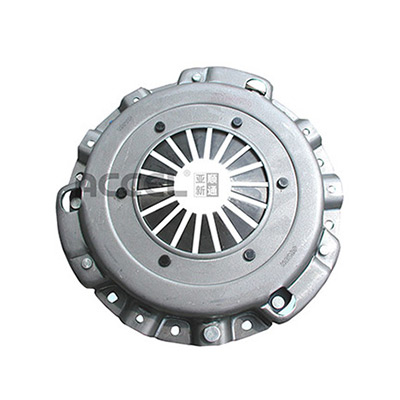- Arabic
- French
- Russian
- Spanish
- Portuguese
- Turkish
- Armenian
- English
- Albanian
- Amharic
- Azerbaijani
- Basque
- Belarusian
- Bengali
- Bosnian
- Bulgarian
- Catalan
- Cebuano
- Corsican
- Croatian
- Czech
- Danish
- Dutch
- Afrikaans
- Esperanto
- Estonian
- Finnish
- Frisian
- Galician
- Georgian
- German
- Greek
- Gujarati
- Haitian Creole
- hausa
- hawaiian
- Hebrew
- Hindi
- Miao
- Hungarian
- Icelandic
- igbo
- Indonesian
- irish
- Italian
- Japanese
- Javanese
- Kannada
- kazakh
- Khmer
- Rwandese
- Korean
- Kurdish
- Kyrgyz
- Lao
- Latin
- Latvian
- Lithuanian
- Luxembourgish
- Macedonian
- Malgashi
- Malay
- Malayalam
- Maltese
- Maori
- Marathi
- Mongolian
- Myanmar
- Nepali
- Norwegian
- Norwegian
- Occitan
- Pashto
- Persian
- Polish
- Punjabi
- Romanian
- Samoan
- Scottish Gaelic
- Serbian
- Sesotho
- Shona
- Sindhi
- Sinhala
- Slovak
- Slovenian
- Somali
- Sundanese
- Swahili
- Swedish
- Tagalog
- Tajik
- Tamil
- Tatar
- Telugu
- Thai
- Turkmen
- Ukrainian
- Urdu
- Uighur
- Uzbek
- Vietnamese
- Welsh
- Bantu
- Yiddish
- Yoruba
- Zulu
ruj . 21, 2024 12:13 Back to list
timing belt material
Understanding Timing Belt Materials Key to Engine Performance
The timing belt, a vital component in an internal combustion engine, plays a crucial role in synchronizing the movement of the crankshaft and camshaft. By ensuring that these two components work in harmony, the timing belt enables optimal engine performance, efficiency, and longevity. Given its significance, the material used in manufacturing timing belts is of paramount importance. This article explores the common materials utilized for timing belts, their properties, advantages, and considerations for selection.
Common Materials for Timing Belts
1. Neoprene One of the most widely used materials for timing belts, neoprene is a synthetic rubber known for its durability and resistance to heat, oil, and wear. It provides excellent flexibility, ensuring that the timing belt can adapt to changes in tension and movement. Neoprene timing belts are favored for their reliability, making them a common choice in many automotive applications.
2. Polyurethane This material is often used in high-performance and heavy-duty applications due to its superior abrasion resistance and tensile strength. Polyurethane timing belts can handle extreme conditions, including high temperatures and heavy loads, making them suitable for both racing vehicles and industrial machinery. Their longevity is a significant advantage, reducing the frequency of replacements.
3. HTD (High Torque Drive) Compound Typically made from a blend of materials, HTD timing belts are designed to minimize backlash and maximize torque transmission. They feature a tooth profile that enhances grip and reduces slippage, making them ideal for applications requiring precise timing and synchronization. The combination of materials in HTD belts results in low noise levels, smooth operation, and greater efficiency.
4. Fiberglass or Steel Reinforcement Many timing belts incorporate reinforcements made from fiberglass or steel. This enhances the belt's strength and resistance to elongation, ensuring that it maintains its shape and functionality over time. The reinforcement is crucial in high-tension scenarios where the timing belt is subjected to significant stress, such as in performance cars.
Factors to Consider in Timing Belt Material Selection
timing belt material

When selecting a timing belt, several factors should be taken into account to ensure optimal performance
1. Operating Conditions The environment in which the timing belt will be used can significantly influence material choice. High-temperature conditions, exposure to oils or chemicals, and high-stress applications may necessitate specific materials like polyurethane or reinforced options.
2. Load Requirements The amount of power and torque expected to be transmitted by the belt is a critical consideration. For high-performance vehicles, a belt made from advanced materials with reinforcements is advisable.
3. Longevity and Maintenance Different materials offer varying durability levels. While neoprene belts are cost-effective, polyurethane and reinforced options may provide better long-term value due to their extended lifespan.
4. Cost-Effectiveness Budget constraints can also influence material selection. Weighing the benefits of durability and performance against upfront costs is essential for both consumers and manufacturers.
Conclusion
The material of a timing belt can significantly impact its performance, longevity, and reliability. Understanding the properties of different materials, such as neoprene, polyurethane, and reinforced composites, allows for informed choices that align with specific application requirements. By investing in the right timing belt material, vehicle owners and manufacturers can enhance engine synchronization, optimize performance, and ensure the longevity of their engines. As technology advances, the development of new materials may continue to improve timing belt efficiency, further solidifying its importance in automotive engineering.
-
Korean Auto Parts Timing Belt 24312-37500 For Hyundai/Kia
NewsMar.07,2025
-
7PK2300 90916-T2024 RIBBED BELT POLY V BELT PK BELT
NewsMar.07,2025
-
Chinese Auto Belt Factory 310-2M-22 For BMW/Mercedes-Benz
NewsMar.07,2025
-
Chinese Auto Belt Factory 310-2M-22 For BMW/Mercedes-Benz
NewsMar.07,2025
-
90916-02660 PK Belt 6PK1680 For Toyota
NewsMar.07,2025
-
drive belt serpentine belt
NewsMar.07,2025

